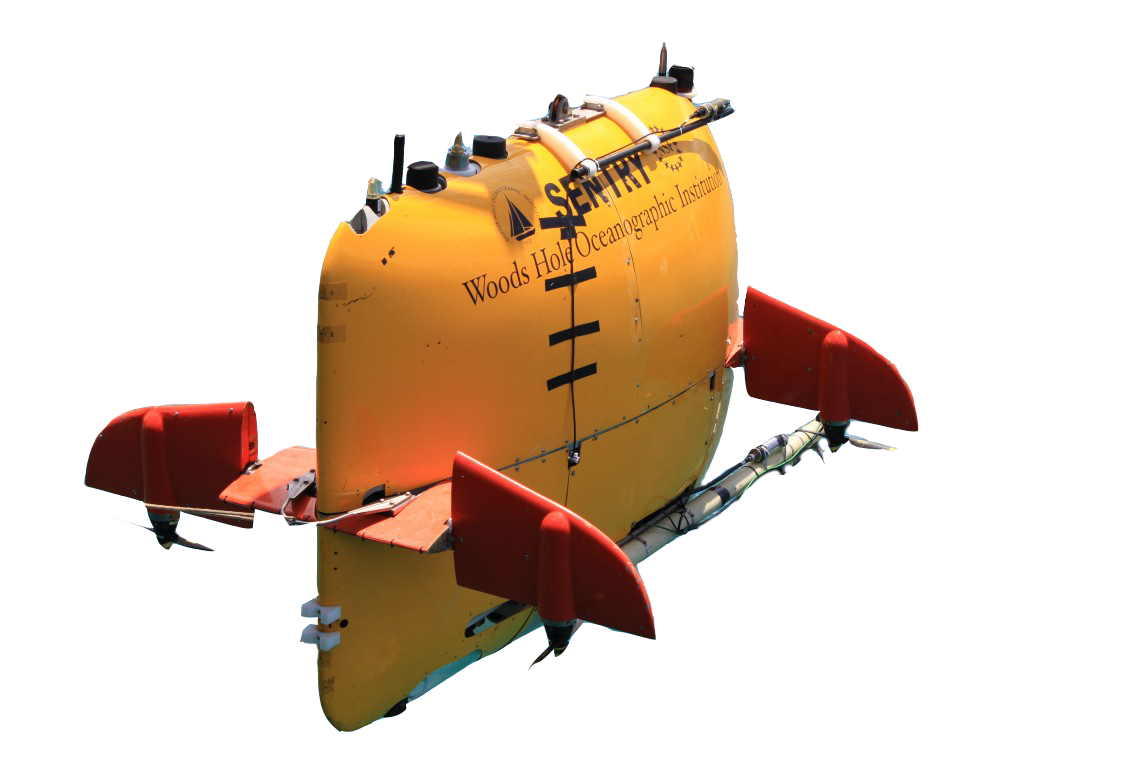Topic
Marine Technology

What is an AUV?
AUV stands for Autonomous Underwater Vehicle. AUVs are unoccupied, untethered, battery-powered vehicles used to collect data for underwater research.
What are AUVs used for?
- Creating maps of the ocean floor
- Recording data on biological, chemical, and physical ocean conditions
- Identifying hazards to navigation
- Exploring geological formations
- Documenting shipwrecks

How do AUVs work?
- Route and sampling protocol are pre-programmed by an operator on vessel or on land
- Data collected by cameras, sonar, chemical sensors, and/or other water property sensors
- Can accommodate a variety of sensors depending on the research needs
- Depending on the model, AUVs can glide at the surface, dive deep, or even hover
- Powered by onboard batteries
- Stores images and other sensor data on onboard computers until the AUV can be retrieved after a dive
AUV fun facts
SMALLEST AUV: about the size of a coffee table
LARGEST AUV: about the size of a bus
DEPTH RANGE: Can travel to the full depth of the ocean and through shallow water ecosystems that would be difficult for large boats or ROVs to navigate.
LONGEST DIVE: missions can last weeks with a recharging plan in place, but dives can typically run ~24 hours